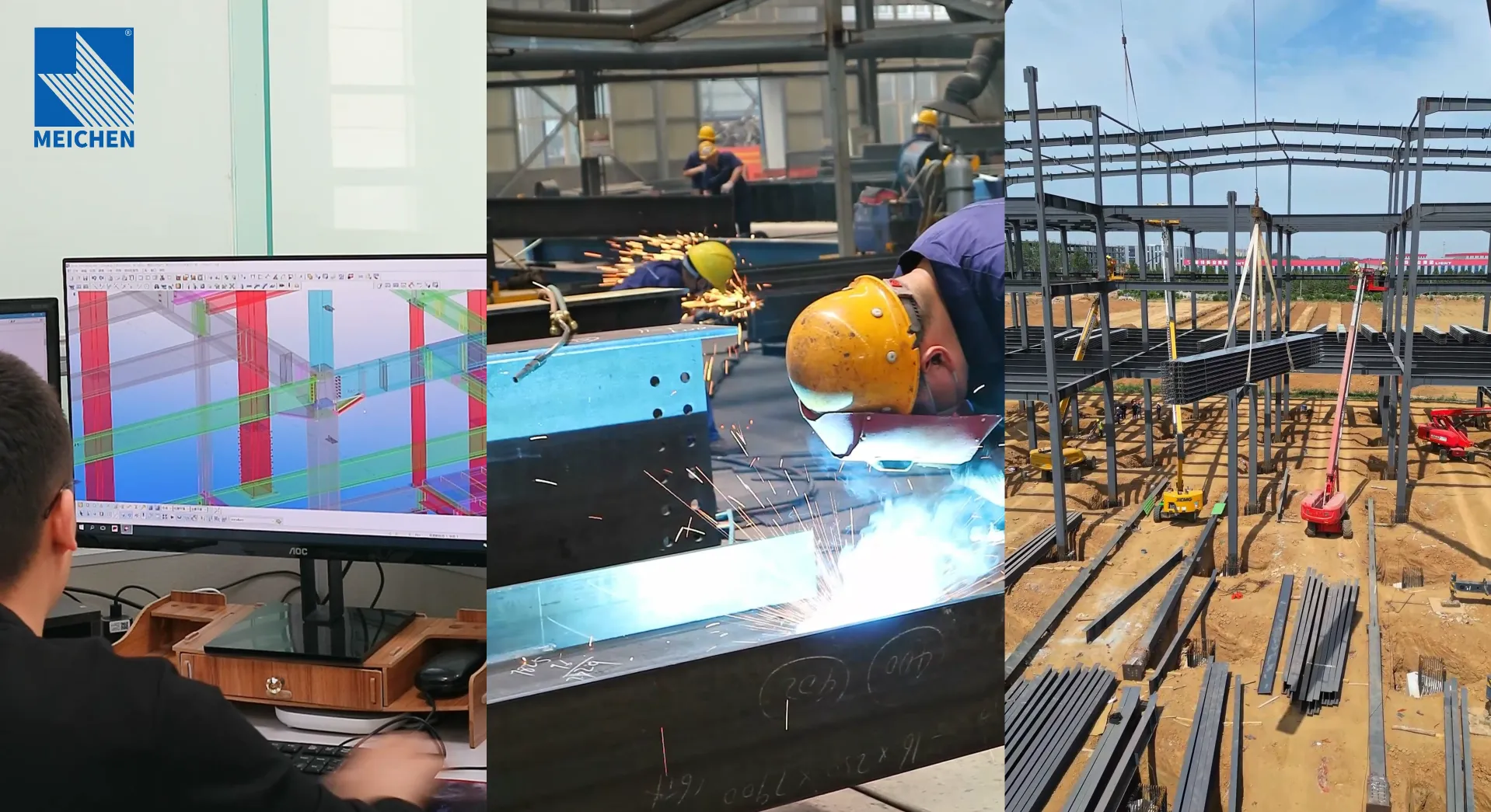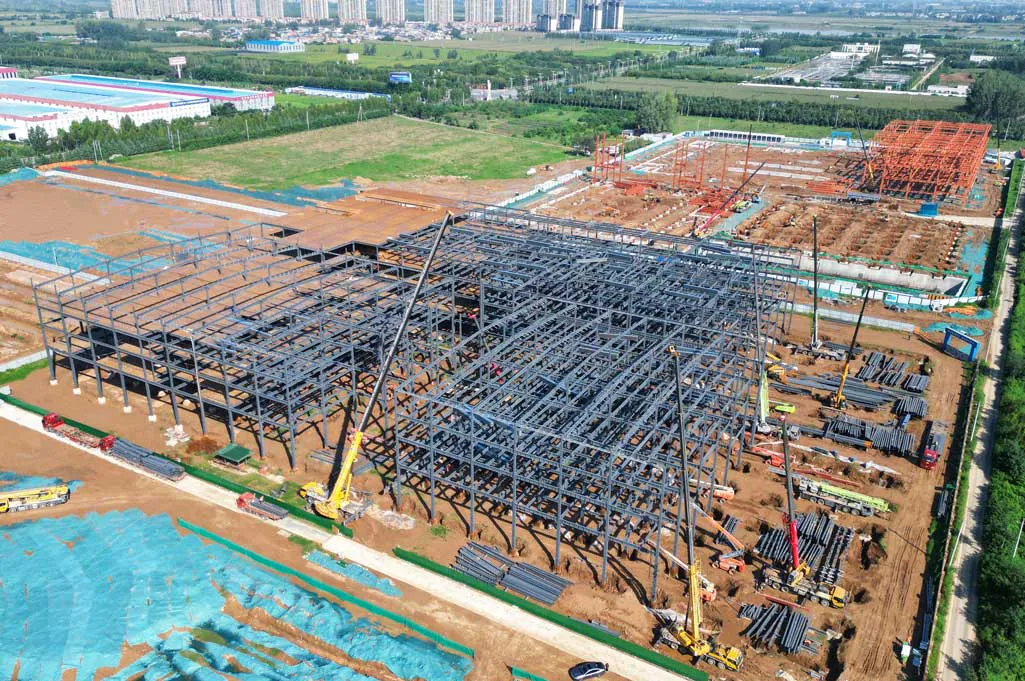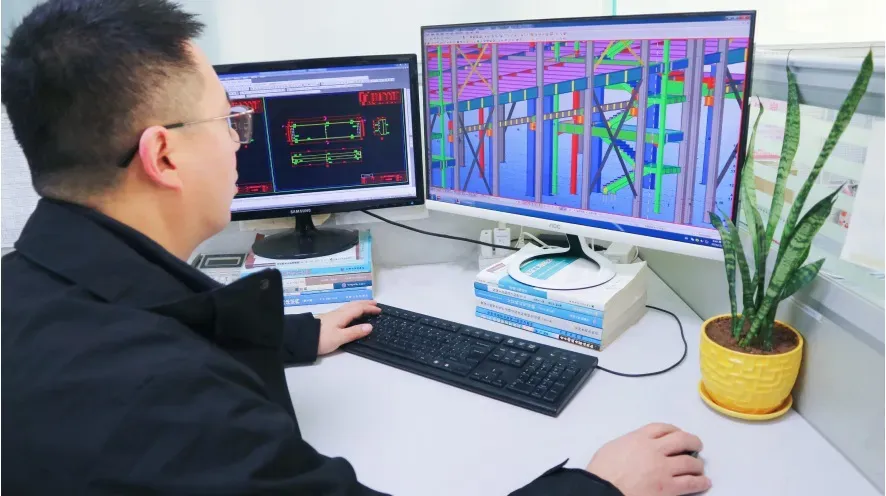Time:2025-11-13 03:40:32 Source:Sanjian Meichen Steel Structure
Steel supplier selection is often the hidden lever behind project success or failure. If you choose carelessly, you risk late deliveries, on-site problems, and expensive rework.
To evaluate steel structure suppliers, you must study their production capacity, delivery track record, technical skills, project management systems, financial strength, and documented safety standards. Use hard project data, not slideshows or promises. Request evidence for every claim.

Most buyers in the steel industry start with hopeful expectations. Many get burned when a supplier overpromises and underdelivers. My years in procurement taught me that flashy quotations or impressive factory photos are never enough. Digging into a supplier’s real ability to handle large volumes, unpredictable schedules, and quality challenges is the only way to protect your project and your bottom line. Here’s how you can move from guesswork to confident decisions.
A supplier’s stated daily production output is just the tip of the iceberg. Big project deliveries usually hit snags: equipment failures, labor shortages, or extreme weather. Real capacity is proven by completed high-volume projects, not just what the factory claims.
The best way to compare suppliers is to request recent large-project delivery records—actual contracts showing daily output, start and finish dates, and how they managed disruptions. Scrutinize whether their production capacity is centralized or distributed across several locations. Factories with parallel workshops have a “fail-safe” advantage. If disaster strikes one plant, the others can keep production on track.
Lead time promises can be empty unless backed by evidence of quick, coordinated production ramp-ups and historical performance in peak demand periods. Ask the supplier to detail how they handled logistics and scheduling during unforeseen crises. Are they able to bring in extra resources, rearrange workshop priorities, and still deliver on time? If a vendor only shows fancy charts but no real crisis-management stories or high-volume handover records, consider it a significant risk for your project.
| Comparison Factor | What to Request | What It Uncovers |
|---|---|---|
| Large-project delivery | Signed contracts, schedule logs | Real, not theoretical, capacity |
| Parallel production | Workshop distribution maps | Production resilience |
| Lead-time management | Historical crisis case studies | Real risk protection |

I always investigate further during my own supplier visits. Instead of just accepting a stated number like “1,000 tons per day,” I ask for the top three largest contracts they completed in the past five years—especially those close to my own project scale and complexity. I audit delivery logs and records for actual handover times. If possible, I visit or set up remote tours of multiple workshops. I also check backup plans—if their main factory must close for repairs, can they shift my order elsewhere quickly without delay? Any answer short of that shows limited real capacity.
Project size dramatically changes the risk calculation. For expansive jobs, piecemeal suppliers and single-function factories—those that only manufacture parts—rarely deliver clean results. Large projects need steel suppliers who control the full chain: design, production, logistics, on-site assembly, and proactive after-sales service.
I look for a supplier with a proven ability for full-cycle project management. This means dedicated project managers assigned from start to finish who can coordinate all parties, including design institutes and subcontractors, seamlessly. A factory with its own financial muscle is equally important. Large steel structure projects often involve bulk procurement, temporary cost overruns, and payment delays. Suppliers that can finance buffering materials and carry temporary debt without halting production give you real schedule and quality protection.
After a big project, repairs and upgrades are routine. I always check if the supplier has ready after-sales teams and regional service points. If they depend only on temporary workers or lack specialists for maintenance, promised support may evaporate at the first sign of trouble. Verifying financial documents, after-sales service maps, and direct manager contacts gives you reassurance far beyond what’s found in marketing materials.
| Attribute | Evidence to Request | Solves Which Problem |
|---|---|---|
| Full-chain capability | Process flowcharts, case studies | Reduces handoff risks |
| Dedicated PM team | Org charts, key manager CVs | Streamlines coordination |
| Financial strength | Credit lines, bank references | Sustains project through hurdles |
| After-sales network | Service location lists | Ensures end-to-end support |

In my own projects, I learned to ask if the steel supplier has dedicated project leaders who have managed jobs from blueprint to aftercare. I require proof that they can pre-finance material purchases if my contractor faces cash-flow hiccups. I quiz them on whether they have skilled field technicians within reach for urgent repairs. I don’t just take their word; I check for direct evidence of these capabilities in recently finished jobs of similar scale. One time, a supplier promised a robust after-sales presence but failed when a sudden fix was needed. I now insist on seeing repair call logs or completed maintenance tickets before signing a large contract.
Technical ability in steel manufacturing is a sharp dividing line. Some vendors excel at basic welding but stumble on advanced designs—especially large-span roofs, unconventional forms, and projects with critical safety demands. You must dig into a supplier’s advanced modelling and engineering workflow.
Begin by asking about the supplier’s in-house design software. If all their solutions depend on buying off-the-shelf programs, their capacity for unusual, complex builds is limited. The strongest vendors invest in their own digital tools and simulation platforms—they use 3D modelling, node optimization, and load simulation specific to their equipment and factory routines. It’s vital to review team credentials. Ask for registered structural engineers, not just general technicians. Depth of technical staff determines how confidently a supplier can solve intricate engineering challenges and avoid costly construction mistakes.
If possible, research whether they’ve delivered landmark projects with complex spatial structures or unique geometrical forms. Reviewing sample engineering drawings, project case photos, and design change records helps you spot true capability. Finally, inspect their process for technical risk assessment and reduction—how do they manage last-minute design changes or on-site adjustments? The suppliers that show professional flexibility backed by strong credentials get my trust.
| Technical Indicator | Proof to Review | Why It Matters |
|---|---|---|
| Proprietary design tools | Software demos | Faster, customized solutions |
| Technical staff expertise | Engineer licenses/resumes | Confidence in quality and innovation |
| Complex build experience | Photos, process reports | Ready for project challenges |

In my work, I always set aside time for technical due diligence. I’ve found that being able to preview a supplier’s digital design environment—watching live modelling or seeing past engineering change logs—makes a huge difference. A supplier with senior registered engineers and a track record of delivering specialized or high-risk structures means you can count on deep technical support, especially when unpredictable problems arise in construction.
Warehouses are often taken for granted, but true safety means coping with heavy machinery, maximum loads, long-term exposure, and expansion plans. The best evaluation goes beyond code-compliance—it includes deep technical review and independent testing.
Always request detailed structural calculation documentation prepared for your specific project. This must include not just routine static analyses but also load combinations and stress tests specific to your intended warehouse use. Demand an independent, third-party review of these plans—ideally from a recognized industry body. Ask for a clear explanation of how critical nodes (connection points) are designed, and the specific corrosion protection and fireproofing measures built in. These areas are common sites of structural failure, so poor node design or shortcut surface treatment could threaten the entire project.
If you anticipate adding floors or increasing load in the future, check if your supplier can provide upgrade options or extension reviews up-front. Look for documentation of recent projects where such upgrades were completed successfully. Never accept verbal commitments; always request calculation sheets and detailed reports.
| Area to Test | What to Demand | Why It Secures the Project |
|---|---|---|
| Structural calculations | Calculation books, independent validation | Confirms design reliability |
| Node and corrosion design | Drawings, material data | Prevents key point failure |
| Expansion/maintenance | Scenario analyses, upgrade samples | Ready for long-term changes |
In my experience, warehouse safety questions come up during audits and future site upgrades. I make it a strict rule to review every calculation paper and demand third-party sign-off. I also study the factory’s upgrade record—how many times they’ve actually strengthened or expanded a warehouse after first build. Suppliers who maintain detailed, current upgrade solutions keep your investment safer.
Evaluate steel structure suppliers with a full review of production ability, technical expertise, management, and proven project safety—demand evidence, not promises, for project success.